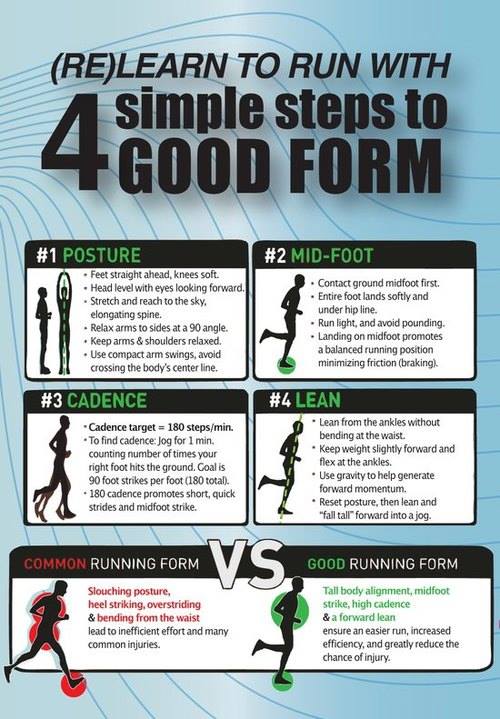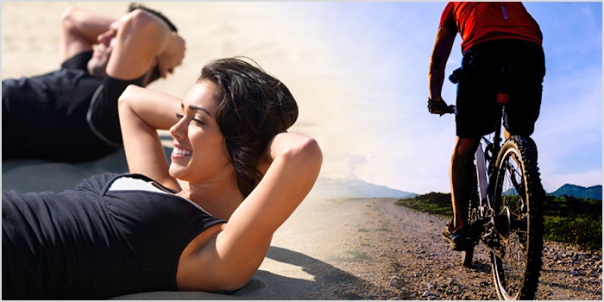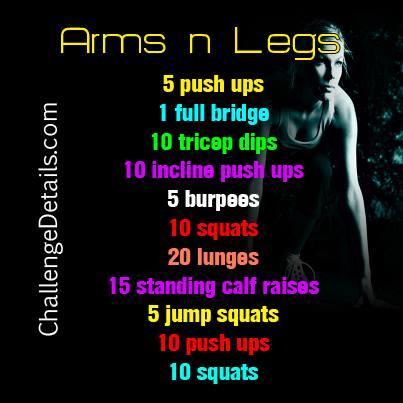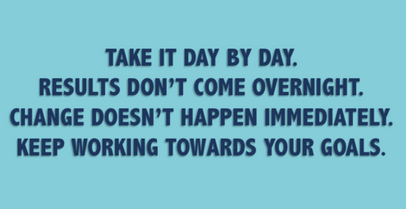
Tag Archives: Exercise
What’s the Best Time of Day to Exercise? By Steve Edwards

The time of day you work out gets a lot of attention, but is it really that important? Let’s dig deeper and take a look at the reality of how much the time of day you work out can affect your results. I’ll also share with you the five best times of the day that you should work out.
1. When you WILL work out.
While this may seem obvious, you should not lose sight of the fact that exercise is almost always preferable to no exercise. While technical “nit-picking” can help make your fitness journey easier, it can also work against you if you get too wrapped up in it. Exercise and healthy eating will always trump all other advice. I’ve seen every excuse in the book, including “I missed my optimal window for training so I skipped today’s workout.” Don’t let this happen. Unless you’re injured, sick, or overtrained, exercising is better than not exercising. Schedule your workout when you have the best chance of getting it done.
2. When you FEEL the best.
There are times during the day when you will have a slight physiological advantage if you work out during them, but none of those trump the psychological edge you have if you feel like exercising. As simple as this sounds, effort equals results more than any other one factor. This means that if you’re a night owl, work out at night. Morning person? Work out first thing in the morning . . . you get my drift. Any time you’re in the mood to really Bring It will work because, by far, the biggest physiological changes happen to your body when you push yourself further than you’ve pushed yourself before. There’s a reason the P90X® mantra is “Bring It.” The closer you get to putting in 100% effort, the more you force your body into an adaptive state, which is exactly where it needs to be in order to change.
3. When your glycogen stores are full.
Now, let’s get technical. Your body can push itself anaerobically longer and harder if you begin your workout with a full tank of muscle glycogen. This will let you lift more weight, jump higher, move faster—pretty much improve every important aspect of every workout that’s not tied to recovery or aerobic efficiency.
Glycogen is mainly recharged by carbohydrates, and is extinguished very quickly with exercise, brain activity, and most other tasks. This means it fluctuates throughout the day and is always highest immediately after you digest a meal containing carbohydrates. This means—depending on your eating schedule—your body is probably primed for peak exercise in the late morning, afternoon, or early evening.
At night, your body can store glycogen, meaning that it’s possible to wake up and train in the morning before you’ve eaten and still have enough energy to get through a workout, but this is a theoretical scenario. Most of us, especially when we’re training hard and not eating a ton, will burn through glycogen recovering from the prior day’s activities. The result is that those early morning workouts can lead to something called “the bonk,” which is what happens when your body runs out of glycogen. Essentially you lose the ability to push your anaerobic realm, and you feel like you’ve hit a wall.
Bonking is not one of those “good pain” times. When your body is out of glycogen, it starts to break down muscle tissue and you quickly begin to offset the fitness gains you’ve made. It’s inevitable that it will happen to you at some point. When it does, don’t try and push though. Instead cut your losses and get on the recovery program by eating, resting, and then reevaluating your eating schedule and/or choice of workout times.
If exercising when your glycogen stores are low is the only time of day available, you can fix the situation nutritionally. If it’s first thing in the morning, eat a half or a whole banana or drink a half or a full serving of Results and Recovery Formula® (depending on how long you’re training) before you start your workout. If that helps, try adding another serving of complex carbohydrates to your evening meal and then skip the banana. If that doesn’t work (you’ll know if it doesn’t—bonking isn’t subtle) it means you’re on a nutritional edge and aren’t eating enough calories to recover from your workout program. It’s time to reevaluate your daily caloric intake.
4. In the morning on an empty stomach.
In the morning, before you’ve eaten, your body is forced to utilize its fat stores for energy, and you can train your body to be efficient at doing so, which is cool. You’re also “burning fat,” which sounds even cooler (although it’s not nearly as effective as “burning glycogen” when it comes to losing body fat). While fantastic, in theory, it’s not if you force your body into a situation where you bonk.
You won’t bonk, however, unless you’re training anaerobically (in other words, hard—as in your heart rate is pegged during parts of the workout). This means easy workouts can have added benefits if done in the morning on an empty stomach. This is why during programs like P90X Doubles, the easier workout of the day is scheduled in the morning.
5. At night before bed.
This time of day is last for a reason. Unless it is really the only time you will work out or the only time you feel the best, you should probably avoid it.
Working out directly before bed can affect your sleep. Most people have a hard time getting to sleep after a workout because exercise can throw off your melatonin, the hormone that regulates sleep, among other things. This isn’t ideal because sleep is very important for recovery. It’s when your body naturally produces most of its own performance-enhancing drugs in the form of hormones. Anything that hurts your ability to sleep should be eliminated if possible.
Exercise also utilizes a lot of nutrients, which are further depleted at night. If you’re on a strict diet, perhaps trying to lose weight, you run further risk by training and then not eating to recover from the workout prior to bed. If you’re on a low-calorie diet and plan to train hard at night, you should follow your workout with, at least, a nutritional recovery strategy (Results and Recovery Formula or equivalent), if not a small meal before going to sleep.
I’m not the norm, so I’ll play the counterpoint to my point as I can fall asleep (and often sleep much better) immediately after a very hard workout. If you’re like me, there’s nothing wrong with training at night. Just follow nutritional protocols that don’t leave you depleted and starving when you wake up. I’ve done this and it can be so severe that you wake up in the middle of the night, a common issue with bodybuilders and fitness trainers getting ready for competition. This is not ideal as it means your body is essentially bonking during sleep. And while that’s okay if your goal is to pose in front of a crowd with absurdly low body fat, like a bodybuilder, it’s also a sign of starvation and, if done too long, will cause your body to begin to shut down its metabolic processes.
The bottom line is that everyone’s body responds differently. We all need to exercise and most of us can eat better. In between are a lot of individual variables. When it comes to getting your best possible workout, psychology often trumps physiology. Exercise when you can and pay close attention to your performance. Then choose your preferred workout time based on your results. It’s really that simple.
Please jopin my online Health and Fitness Support Group at https://www.facebook.com/MeFinallyFit
Mmmm….Water

In case you didn’t hear us the first 5 million times, drinking half of your body weight in ounces of water every day is key to good health.
Despite all the benefits, it’s easy to forget to knock back a few glasses of H2O daily—probably because, on the boring scale, drinking water ranks up there with watching paint dry, going to traffic school, and listening to Gregorian chants. But it doesn’t have to be! Here are 10 easy ways to flavor your water so that it’s something you look forward to.
Please join my online Health and Fitness Support Group at https://www.facebook.com/MeFinallyFit
Ultimate Reset Challenge
**Transformation Tuesday**
There has been a lot of talk about cleanses and which ones are the right ones, can I do it, how will it work for me? Etc.
The Ultimate Reset is a 21 day all natural cleanse and you get to eat!! Yay, and really good food at that, A LOT of water, and supplements that will literally take your body and cleanse it of all the nasty, harsh, chemicals we consume through food, breathe in through the air, and just apply on through products. In my opinion taking your body back to it’s natural factory settings.
I am doing the Ultimate Reset in mid September and would like to welcome you all!!! If you’re interested in this 21 day Reset, message me. I’ll love to chat with you!
Fibromyalgia: Aerobic Fitness for Fibromyalgia

Aerobic exercise is considered an essential component of a comprehensive management program for fibromyalgia. In a review of fibromyalgia patients, it was found that more than 80% of the patients were physically “unfit” based on maximal oxygen uptake and the American Heart Association guidelines 47. Fibromyalgia syndrome sufferers experience muscle, joint or bone fatigue. According to recent surveys, exercise and aerobics are important for fibromyalgia patients. Additionally, fatigue fosters inactivity, which in turn leads to deconditioning and enhances a patient’s susceptibility to muscle trauma and further muscle pain.
One researcher found fibromyalgia-like symptoms could readily and reversibly be induced in sedentary, normal individuals but not in individuals who were aerobically fit, running 2 to 7 miles per day 34. This information suggests that improved fitness may be therapeutic.
In a study of 34 fibromyalgia patients randomly assigned to a cardiovascular fitness program or flexibility training program, the cardiovascular fitness group had a 29% increase in cardiovascular fitness and the flexibility group had a 4% decrease. Importantly, the cardiovascular group experienced overall improvements as follows:
Total myalgic score improved by 73%
Visual analog pain score improved by 23%
Pain diagram area score improved by 22%
The flexibility training group, however, improved only 1% to 7% on each score.
It is theorized that an aerobic fitness program can be beneficial for fibromyalgia patients by improving slow-wave sleep, stimulating release of endogenous endorphins, improving self-esteem and reducing stress, tension and depression (49). Exercise is also very valuable because it shifts the locus of control to the individual.
An appropriate exercise prescription should include parameters for:
Type of exercise
Frequency of exericse
Duration of exericse
Intensity of exercise
Type of Exercise
The type of exercise should be a low impact, closed kinetic chain aerobic exercise program, such as walking, bicycling, water aerobics or swimming. These reduce axial loading on the musculoskeletal system and minimize the risk for undue joint trauma.
Therapeutic pools heated to 86 degrees Fahrenheit or better can be helpful. Additionally, cross training can minimize monotony and foster participation, as can group or community programs, use of exercise videos or a workout diary. In general, weight lifting should be avoided, particularly early on, due to the risk of muscle and joint trauma.
A 5 to 10 minute warm up and cool down period of gentle stretching of the active muscle groups is essential to prevent unnecessary injury. Patients should be advised that they may initially experience a flare in their symptoms and a short course of NSAIDs or acetaminophen may be helpful.
Unfortunately, because deconditioned individuals tend to be more susceptible to muscle micro-trauma and exacerbation of pain and stiffness when beginning a new exercise program, many people stop exercising before benefits can be realized. The goal is to maintain a regular, scheduled program.
Frequency of Exercise
Fibromyalgia patients should generally exercise 3 to 4 times per week on a regular basis. Exercising less than 3 times per week is not aerobically beneficial, and exercising more than 4 times a week may increase the incidence of minor orthopedic trauma.
Duration of Exercise
Each exercise session should be at least 20 minutes long. However, it may be necessary to start out with less, perhaps even 3 to 5 minutes, as tolerated, and build gradually over the ensuing weeks.
Intensity of Exercise
Intensity, or how hard to exercise, can be monitored by the percent of one’s target heart rate while exercising. The target heart rate is calculated as follows:
-220
-minus one’s age
-times 0.7
Thus, a 45 year old person’s target heart rate would be (220-45) x 0.7, or 122 beats per minute. For most individuals, “symptom limited exercise” is probably most appropriate. You should be able to comfortably talk to an exercise partner while exercising without undue stress, shortness of breath, pain or dizziness. Otherwise, you are working too hard.
Fitness Tips – Fitness Tips for Women in Their 60s

Vibrancy in your 60s is easy with a little planning and knowledge. There’s no reason to slow down your activities. You just need to be savvy about where to focus your energies. I train many women in their 60s and they enjoy their lives as much as ever.
Below are some areas to focus on and guidelines to follow to stay healthy and fit.
Family History
Your DNA is more important now than ever before. Take stock of your family history. Are there any health issues that are prominent? If so, you’ll need to talk with your doctor about how to stay ahead of any problems. A fitness routine designed to work around an issue such as osteoporosis or heart disease is simple and effective. You could add years to your life and keep your joints graceful and fluid.
Weight Bearing Exercises
Strength training is crucial in the prevention of osteoporosis but also great for posture, alignment and muscle tone. Your muscles begin to atrophy in your 30s and the effects are more evident in yours 60s. You can slow down and even reverse the process with a smart weight training routine. Try circuit training in your health club or working with a personal trainer to devise the best routine for you. Other great options are yoga, Pilates and free weight work. Try out a few different combinations to see what works best for you. Aim for 2-3 sessions per week.
Smart Cardio
Perhaps the years have taken a toll on your joints and a quick 5-mile run isn’t what it used to be on your knees or back. It’s time to work smart with your cardio choices. Regular cardio training will keep your heart healthy. A brisk walk, elliptical or arc training and other forms of low impact cardio are all good choices. If you love certain activities you don’t have to give them up. Cut back on the amount of time you do them each week and substitute with easier forms of cardio. If you’re as healthy as you’ve always been then there’s no need to cut back at all. Enjoy your body and enjoy this decade. Aim for 150 minutes of cardio per week. That’s about 22 minutes per day.
Balance Work
Keeping bones healthy and strong is important in your 60s, but avoiding falls is equally important. Working on balance is a big part of avoiding falls and recovering from wobbly moments. Yoga and Pilates both work on balance or if you’re in a gym environment you can work with a BOSU or Styrofoam rollers. Whenever you start balance training I strongly urge you to work with a fitness professional to find the right starting point and to progress quickly.
Mental Agility
Keep the neurons firing quickly with cardio and resistance training. By exercising regularly you’ll be quicker on your feet and also quicker in your mind. Mental agility training takes many forms such as the daily crossword puzzle, Sudoku or reading a challenging text from a literary or science journal.
Sample Fitness Plans
Beginner
Make sure to get in 30 minutes of brisk walking five or six days per week. Add on one circuit training class and one yoga class.
Intermediate
Mix 35 minute sessions of elliptical training and treadmill walk/runs five or six days per week. One Pilates mat class and one free weight workout will complete the mix.
Advanced
Do your favorite cardio for 40 minutes three days per week and cross-train with a low impact form of cardio two to three days per week, also for 40 minutes. Pilates equipment class or a strenuous yoga class and one personal training session or bootcamp class will complete your week.
As a woman in your 60s, you know what you like and you know how to take care of yourself. With big family responsibilities behind you and more time for yourself it’s a perfect decade for “me” time. Enjoy.
Exercises

Take It Day By Day…

Join our online health and fitness support group at https://www.facebook.com/MeFinallyFit
Shakeology
Shakeology Pricing Breakdown
August 20, 2013 at 11:19am
It has been my experience that one of the biggest hang ups people have with Shakeology is the product price. When you just look at the surface, the Shakeology price seems to be very expensive. But in all actuality, when you dig deeper into it, you’ll discover that it’s really an incredible bargain and value for what you get.
HOW MUCH IS SHAKEOLOGY?
First, just in case you don’t know the Shakeology price I’ll break it down for you. If you order a bag of Shakeology you will get a full 30 day supply which comes to $4/day. If you order the individual packets of Shakeology you’ll only get 24 servings which comes to $5/day. The reason it costs more and you get less servings with the individual packets is simply because it costs more for the company.That is why I always recommend that you just get a bag of Shakeology since you get more for your money and you get the best possible Shakeology price. If you really want or need individual servings of Shakeology, then just buy some cheap zip lock bags and seperate what you need. However, if you’re not on a tight budget, but you need the individual packets, then I say just go for it!!
WHY DOES IT COST SO MUCH?
As I mentioned above, a lot of people get hung up on the price of Shakeology. When I’m talking about it with someone, usually the first or second question that they have about it is the price. When I tell them the Shakeology price sometimes people give me funny looks. I know what they’re typically thinking, “Wow, that stuff is expensive!” However, once I explain to them exactly what’s inside Shakeology and what it does for them they quickly see the value behind it. Here is a great video by Tony Horton, creator of P90X and his breakdown of “How Healthy Is Your Shake?”http://www.youtube.com/watch?v=zzHPVDtzr-QIS IT WORTH THE PRICE?If you haven’t already checked out the above video, take the time to do so now. The short and sweet answer to that question about whether or not Shakeology is worth it…YES!!! It is worth every single penny and more!! Think about it…the Shakeology price is $4/serving. Shakeology has been designed as a meal replacement(which is exactly how I use it and how you should too). So you’re paying $4 for a meal that is 100% natural, filled with antioxidants, phyto-nutrients, pre-biotics, digestive enzymes, protein, vitamins, minerals, etc. etc. It literally has everything your body needs so that you maintain optimal health.The Shakeology ingredient list, the fact that it’s 100% natural, and what those ingredients can do for you in itself should prove to you that the Shakeology price is totally worth every single cent and more. Again, Shakeology is incredible stuff and can help to lower your cholesterol, lose weight, improve your digestion and regularity, as well as to reduce your cravings and increase your energy.HOW DO I ORDER IT AND GET THE BEST POSSIBLE PRICE?To get the best Shakeology price you’ll want to order Shakeology on the home direct/autoship plan. That means you’ll get Shakeology each month in the flavor of your choice so you don’t run out. One of the biggest benefits to getting it on autoship is that you get FREE shipping which saves you $$! And if, by some chance you decide you do not like the Shakeology or you are not seeing results, you can send the empty bag back for a complete refund, no questions asked! I encourage you to go ahead and order yourself a bag of this stuff and try it for yourself by heading to my website below and clicking on Shop-www.mefinallyfit.com*You can also contact me for a 5 day sample pack for $25.00.HOW CAN I GET A MAJOR DISCOUNT ON IT OR EVEN FREE??If you want to get the best possible Shakeology price and you are truly committed to improving your health and fitness, then read on. I’m going to explain to you quickly how you can get an awesome discount on Shakeology. To get an incredible discount, you would sign up as a Beachbody Coach and join my team. As a coach you will get a 25% discount on Shakeology as well as be able to refer your family and friends to it and earn some extra cash. If you get just 3 people on Shakeology autoship, then you’ll actually have your Shakeology COMPLETELY paid for so it will be FREE!! It’s a lot easier to do then you may think, so it may be worth checking out.If you have other questions that have not been answered please contact me:
http://www.mefinallyfit.com
http://myshakeology.com/mefinallyfit
mefinallyfit@gmail.com
Love this!!